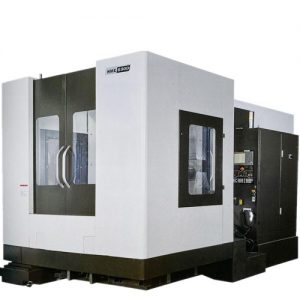Whether the selection of cutting amount (ap, f, v) is reasonable plays an important role in whether the potential of the machine tool and the cutting performance of the tool can be fully utilized, and the realization of high quality, high yield, low cost and safe operation is very important. In 2.3.3, the general principle of the selection of cutting amount is introduced, and the selection principle of cutting amount is mainly discussed here:
When rough turning, first consider selecting a larger back-cut amount ap, secondly choose a larger feed amount f, and finally determine a suitable cutting speed v. Increasing the back engagement amount ap can reduce the number of tool passes, and increasing the feed rate f is conducive to chip breaking. Therefore, selecting the amount of rough turning according to the above principles is beneficial to improve production efficiency, reduce tool consumption, and reduce processing costs.
When finishing turning, the machining accuracy and surface roughness are required to be high, and the machining allowance is small and uniform. Therefore, when selecting the cutting amount for finishing turning, we should focus on how to ensure the processing quality, and on this basis, try to improve productivity. Therefore, small (but not too small) back-engagement amount ap and feed amount f should be selected during finishing, and tool materials with high cutting performance and reasonable geometric parameters should be selected to increase the cutting speed v as much as possible.

1. CNC Lathe Machine Determination of the amount of AP
In the case where the rigidity of the process system and the power of the machine tool allow, a larger amount of back cutting is selected as much as possible to reduce the number of feeds. When the precision of the parts is high, the finishing allowance should be considered. The finishing allowance is generally smaller than that of ordinary turning, usually 0.1~0.5mm.
2. Feed amount f (some CNC Machine tools use feed rate Vf)
The selection of the feed amount f should be adapted to the amount of back cutting and the spindle speed. On the premise of ensuring the machining quality of the workpiece, a higher feed rate (below 2000mm/min) can be selected. When parting off, turning deep holes or finishing, a lower feed rate should be selected. When the tool idling, especially when “returning to zero” at a long distance, the feed rate can be set as high as possible.
When rough turning, generally take f=0.3~0.8㎜/r, often take f=0.1~0.3㎜/r for fine turning, and take f=0.05~0.2㎜/r when cutting.
3. CNC Lathe Machine Determination of Spindle Speed
1) Spindle speed when the outer circle of the light car is turned off
The spindle speed should be determined according to the diameter of the machined part on the part, and the cutting speed allowed by the parts and tool materials and processing properties.
In addition to calculation and table look-up selection, the cutting speed can also be determined according to practical experience. It should be noted that the low-speed output torque of the CNC lathe with AC variable frequency speed regulation is small, so the cutting speed cannot be too low.
After the cutting speed is determined, use the formula n = 1000 vc/πd to calculate the spindle speed n (r/min). Table 5-9 is the reference value of the cutting speed of cemented carbide cylindrical turning tools.
How to determine the cutting speed during processing, in addition to referring to the values listed in Table 1, is mainly determined based on practical experience.
| The workpiece material | heat treatment state | ap/mm | ||
| (0.3,2] | (2,6] | (6,10] | ||
| f/(mm.r-1) | ||||
| (0.08, 0.3] | (0.3,0.6] | (0.6,1) | ||
| vc(m. min-1) | ||||
| Low carbon steel, easy cutting steel | hot rolled | 140-180 | 100-120 | 70-90 |
| Medium carbon steel | hot rolled | 130-160 | 90-110 | 60-80 |
| tempering | 100-130 | 70-90 | 50-70 | |
| Alloyed structural steel | hot rolled | 100-130 | 70-90 | 50-70 |
| tempering | 80-110. | 50-70 | 40-60 | |
| Tool steel | annealing | 90-120 | 60-80 | 50-70 |
| Gray cast iron
|
HBS<190 | 90-120 | 60-80 | 50-70 |
| HBS=190-225 | 80-110 | 50-70 | 40-60 | |
| High manganese steel | 10-20 | |||
| Copper and copper alloys | 200-250 | 120-180 | 90-120 | |
| Aluminium and aluminium alloys | 300-600 | 200-400 | 150-200 | |
| Cast aluminum alloy (WSI13%) | 100-180 | 80-150 | 60-100 | |
Note: The tool durability is about 60min when cutting steel and gray cast iron.
2) Spindle speed when threading
When turning threads, the spindle speed of the lathe will be affected by various factors such as the pitch P (or lead) of the thread, the frequency up and down characteristics of the drive motor, and the speed of thread interpolation. Therefore, different CNC systems are recommended. Spindle speed selection range. Most economical CNC lathes recommend the spindle speed n (r/min) for threading as:
n ≤ (1200/P)-k (1)
In the formula, P——the thread pitch to be processed, mm;
k——Insurance coefficient, generally taken as 80.
In addition, when arranging the amount of rough and fine turning, you should pay attention to the allowable cutting amount range given in the machine tool manual. For CNC lathes with AC variable frequency speed regulation for the spindle, because the torque of the spindle is reduced at low speed, you should pay special attention to the cutting at this time. Dosage selection.


